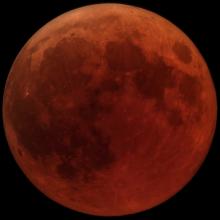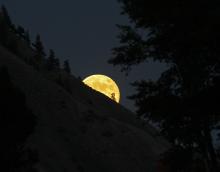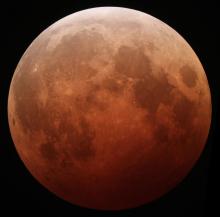Listen to today's episode of StarDate on the web the same day it airs in high-quality streaming audio without any extra ads or announcements. Choose a $8 one-month pass, or listen every day for a year for just $30.
You are here
Short-Night Moon
The Moon is full tonight — a brilliant light for the holiday night. Yet it won’t be in view all that long. It’s the Short-Night Moon — the full Moon that’s in sight for a shorter period than any other full Moon of the year.
We see so little of tonight’s Moon because the Sun and the full Moon are like two people on a seesaw — when one is up, the other is down. At this time of year, near the summer solstice, the Sun is “up.” It’s in view for a long time, and it climbs highest across the sky. That means the Moon, at the other end of the seesaw, is “down.” It stays low as it scoots across the sky, and it’s not in view for long.
From Tampa, for example, the Sun will be in the sky for almost 14 hours, with the Moon in view for only 10 and a half hours. From Dallas, it’s more than 14 hours of sunlight, followed by just 10 hours of moonlight. And from Spokane, which is much farther north, the Sun is in view for almost twice as long as the Moon — almost 16 hours versus just eight and a half.
Most years, the Short-Night Moon is in June. This year, though, tonight’s full Moon is closer to the solstice than the one in June, so July takes the honors.
And the Moon is followed across the sky tonight by two short-night planets. Bright Jupiter is to the lower left of the Moon in early evening, with fainter Saturn to the lower left of Jupiter. The three worlds will be much closer together tomorrow night; more about that tomorrow.
Script by Damond Benningfield






